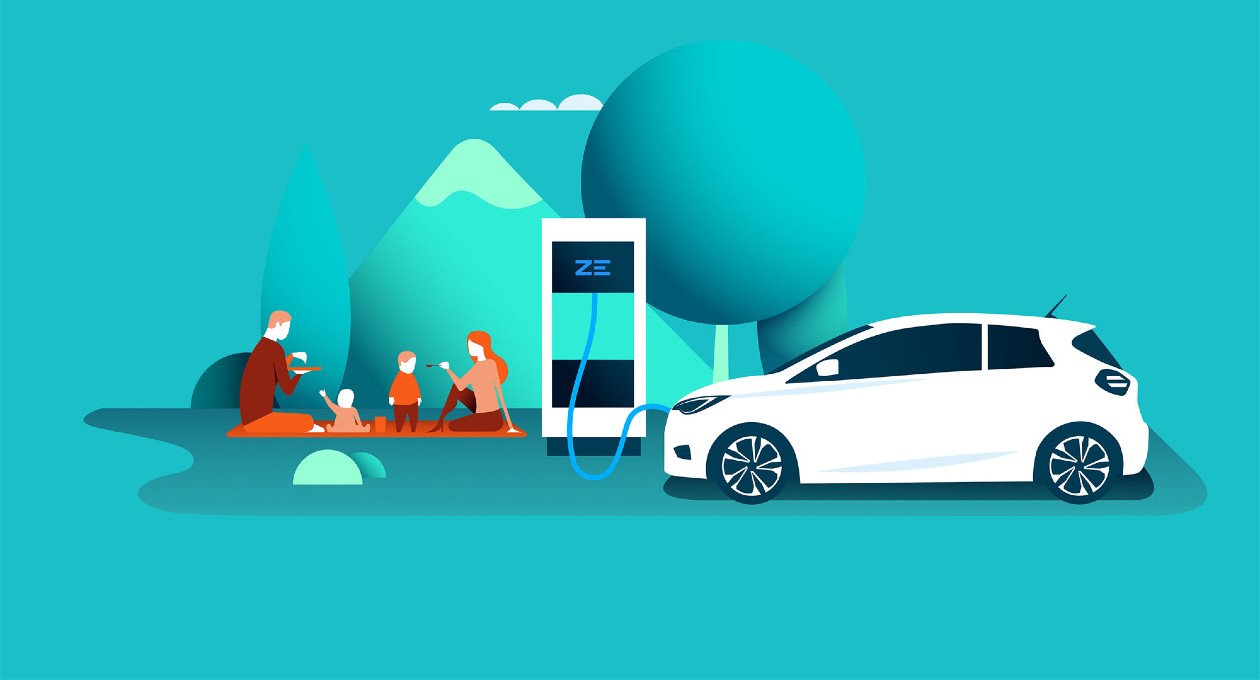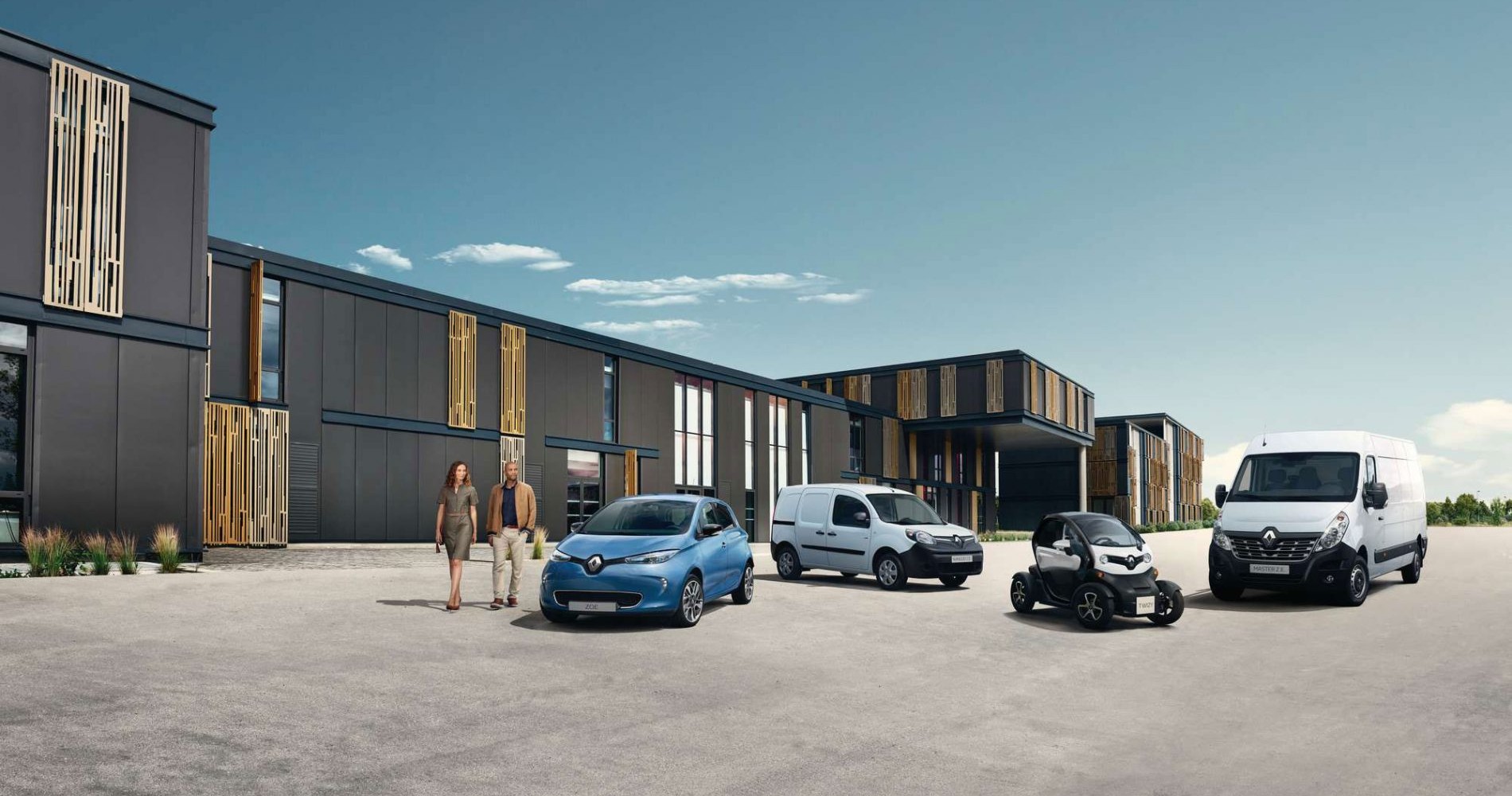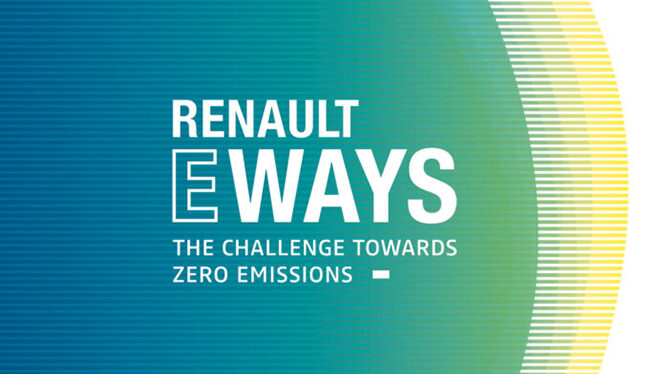

ADVANTAGE #1 - Zero CO² emissions while in use*
The electric car means the end of exhaust emissions

Since an electric engine is not powered by combustion, operating one does not produce any gas. This is what is meant by concept “zero emission”*, and is the reason electric cars are not subject to the traffic restrictions enforced during periods of peak atmospheric pollution.
Electric mobility is one of the main ways of fulfilling the commitments made in keeping with the COP 21 conference and the resulting Paris Agreement on climate change. European Union member countries agreed on the goal of reducing CO2 emissions by 37.5% for passenger vehicles and by 31% for light commercial vehicles by 2030.
These measures will come into affect on January 1st 2020, upon the revocation of the current reglementation concerning CO2 emission standards.
As a result of those ambitious targets, the incentive to use electric cars is getting stronger and stronger. They are allowed to be parked for free in several large European cities, for example. They are also allowed to drive through historic Italian or Spanish city centres that are usually closed off to the combustion-powered vehicles of non-residents.
Finally, they enjoy a variety of benefits, ranging from financial incentives to the right to drive in bus lanes.
ADVANTAGE #2 - Vehicles conducive to shared uses
Easy-to-use carsharing

Park, plug in, and you’re done! An electric car can recharge its battery as soon as it is stopped near a charging station. As a result, it is well suited to shared uses, as the success of European carsharing services demonstrates.
Some of these services are built around specific charging stations, but others offer a fleet of self-service vehicles that their users can return anywhere within a defined geographical area, without having to worry about taking them back to a predetermined location.
Silent and easy to drive, these shared electric cars are a choice for any short everyday drive. The drivers who borrow them are freed from the usual demands associated with owning a personal vehicle.
Thanks to carsharing, the same car meets the needs of several different users, making it possible to lower the total number of vehicles on the road. The fleet manager has supervisory tools at their disposal, making it easy to recharge cars and relocate them to where they are needed. The mindset of pooling resources also encourages the development of public charging infrastructure.
ADVANTAGE #3 - Connecting to the grid
Electrical grids that keep getting smarter

Charging an electric vehicle is not necessarily a one-way process: the car is able to exchange information with the electricity grid that powers it. Whether you are using a private charging point, at home, or a public charging station, the goal of this communication is to adapt the charging parameters according to external factors.
This smart charging may, for example, mean that the flow of electricity is triggered when production exceeds demand at the scale of the whole electrical grid. Or conversely, it is temporarily halted during consumption peaks. Electricity providers thus have an adjustable variable that helps minimise imbalances across the grid and increase the share of intermittent renewable energy sources in electricity production.
In the future, vehicle-to-grid (V2G) will further more extends the collaborative framework encompassing cars and the electricity grid. Based on the principle of bi-directional charging, it allows cars to inject electricity back into the grid, on demand, in response to urgent need or to make low-carbon solar or wind energy available after it is produced.
These technologies can be combined at the scale of a home or building to help develop the self-sufficiency of locally produced electricity, for example. When they are scaled up to the size of a neighbourhood or city, then we are talking about a smart grid: an intelligent distribution network where all energy exchanges are optimised in as close to real time as possible.
ADVANTAGE #4 - Component optimisation
Batteries useful at all stages of their life

These different technologies broaden the scope of the services that electric car batteries can provide. As for stationary energy battery storage systems, it lengthens the amount of time they can be used. It gives batteries a “second life”.
How does it work? Batteries no longer able to meet the performance demands of a vehicle are given a second, stationary life storing energy. Transformed into domestic batteries, they can, for example, accumulate the electricity produced during the daytime by solar panels installed on the roof of a house, then make it available to use at night.
They can also be integrated into storage projects at the scale of a city or an industrial site, like the Advanced Battery Storage project developed by Renault.
This second life delays the need to recycle them for several years, all while contributing to the promotion of green electricity production: it’s a perfect illustration of the circular economy!
ADVANTAGE #5 - Minimal upkeep
Reduced running cost

An electric engine has no timing belt and no oil filter! The lack of a combustion chamber, a gearbox and a clutch drastically simplifies maintenance. For an electric car, it is limited to replacing wearing parts like the tyres or brake pads, as well as replacing consumable items like windscreen wiper fluid. As a result, maintenance represents a modest outlay in the total running cost associated with driving the car.
*Zero CO2 emissions or regulated atmospheric pollutants during road use, excluding wear parts
Copyrights: iStock, Giovanni TAGINI, Renault, Yannick BROSSARD, PLANIMONTEUR
Read also






